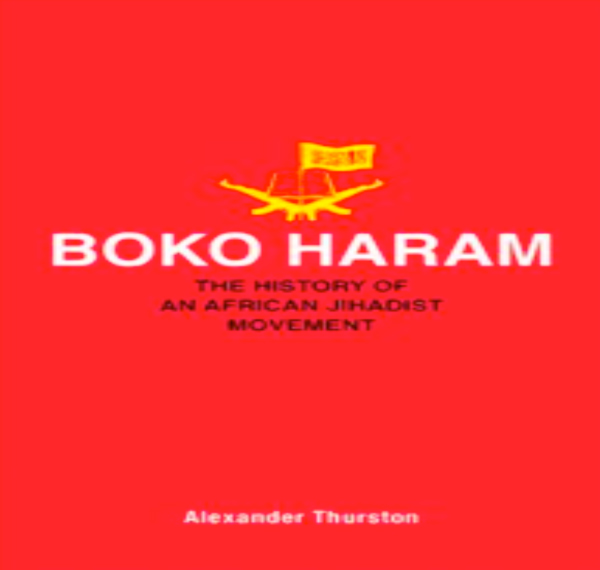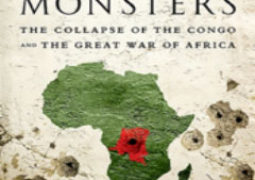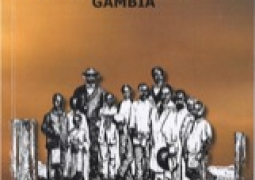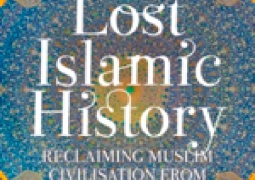
Boko Haram has been declared the deadliest terrorist group in 2014. Its violence first began in Nigeria, but has also spread to the Lake Chad Basin region. This book is the first to shed light on the full story of this jihadist group, from its beginnings in the early 2000s to its widespread violence, including the kidnappings of approximately 300 girls from a school in Chibok. In Boko Haram: The History of an African Jihadist Movement, the author Alexander Thurston, an African studies professor at Georgetown University, systematically examines the movement’s origins and offers a comprehensive discussion of the interrelated factors that led to the emergence and rise of Boko Haram in north-eastern Nigeria and the Lake Chad Basin. The book is organised into five chapters (‘The Lifeworld of Muhammad Yusuf’, ‘Preaching Exclusivism, Playing Politics’, ‘Chaos is Worse Than Killing’, ‘Total War in Northeastern Nigeria’, and ‘Same War, New Actors’).
Drawing upon years of research on jihadi videos, audio recordings, press reports and interviews with experts in Nigeria and Lake Chad Basin countries, Thurston unravels Boko Haram’s development by showing the complex religious and political environment of the region. The author moves away from the more generalised explanations pertaining to the emergence of Boko Haram, such as economic deprivation, unemployment, corruption and poor governance. Instead, he provides further nuanced and in-depth insight by pointing to the context in which Boko Haram emerged. His central argument is that the emergence of Boko Haram is associated with doctrine and events. Thurston contributes to the field of terrorism studies by offering a more detailed picture of how religious and political environment feed into the existence of this radical group.
Thurston takes an insightful look into life in northern Nigeria in the 1970s and 1980s, where religious fragmentation had dominated. When Yusuf, the founder of Boko Haram, and Shekau, the future leader of Boko Haram, were growing up, they witnessed the failure of the Nigerian political system to prevent violence, enforce accountability, and improve the lives of Nigerians. Not only did this failure shape Yusuf’s and Shekau’s perceptions of the government, but many Muslim families have also mistrusted Western-style schools and Western-educated politicians. Thurston describes how Western-style education is associated with colonisation and it is a widely held perception that this education system attempts to destroy Nigerian traditions. At the heart of this discussion, religious and political violence have been a feature of everyday life in Northern Nigeria. Thurston’s detailed biography of Mohammad Yusuf helps us comprehend how Yusuf influenced the poor and the corrupt politicians to join his cause. In doing so, Boko Haram emerged not only as the most radical movement of protest against political rulers, but also as the movement of opposition against all forms of ‘Western ways of life”.
Yusuf described himself as a follower of a brand of Salafi Islam in the city of Maiduguri, which is a centre for Salafi groups and for ultra-conservative Sunni Muslims. He, however, ran counter to the mainstream Salafists in order to live in a proper Islamic state in which Islamic law (Sharia) is implemented, because he portrayed himself as “a true Muslim”. He has urged other Muslims to follow the true path to Islam if they are true believers. As a researcher with an Islamic religious background, Thurston sheds light on the ways in which Boko Haram’s theology has evolved over time, and shows how Boko Haram distinguished itself from mainstream Salafis after the 2009 uprising. Yusuf believed that Salafists are government scholars, and that he and his followers could no longer trust them (p.99). This is because Salafis support a Western-style education and Nigeria’s political system. The way in which Yusuf preached also formed his followers’ understanding of Islam and their attitudes towards Salafis and other Muslims. Even though his preaching and sermons were not violent at first, the uprising of July 2009 was a watershed moment with regards to Boko Haram’s rhetoric, because Yusuf was assassinated while being held in captivity by Nigerian police, and the group was suppressed by the Nigerian security forces. Following the 2009 uprising, the re-emergence of Boko Haram is something that the Nigerian authorities did not expect. It is critical to know that even though Yusuf and his successor, Shekau, have not garnered popular support in north-eastern Nigeria, they managed to revive the spirit of jihad among Nigerian Muslims. After the death of Yusuf, Boko Haram, under the leadership of Abubakar Shekau, re-emerged with more sophisticated attacks including attacks on religious institutions, security institutions, government agencies and educational institution. The group also attempts to forge links with transnational groups, including renewing its former ties to al-Qaida and declaring its allegiance to ISIS in 2015. After forming this allegiance, it also changed its name to ‘Islamic State West Africa Province’ (ISWAP); however, as the author suggests, the connection to ISIS remains largely rhetorical, and their cooperation seemed weak as of spring 2016 (p.274).
Thurston also discusses the regionalisation of the crisis, which has spread to neighbouring countries such as Niger, Chad and Cameroon; places where jihadists launched several hundred armed attacks in 2016 alone. In that sense, Nigeria is not the only place in which Boko Haram carries out its attacks. As the Nigerian security forces became more violent in their attempts to contain the group, Boko Haram intensified its attacks even further.
The book ends with recommendations by the author on how to defeat Boko Haram in the years to come. Thurston believes that until politics is brought back to the fore, the efforts to defeat Boko Haram are likely to fail. He advocates political solutions to prevent the development of militant movements of the group. Nonetheless, one of the weaknesses of this book is that it does not take the importance of religious perspectives into account. It is understandable that politics has played an important role in the development of Boko Haram, but Boko Haram’s interpretation of Islam is also crucial for the growth of the group and for the distribution of its cause. Another weakness is that the author sets aside Boko Haram’s treatment of women due to a lack of space. It is crucial to bear in mind that while the global media gave so much attention to the kidnapped women and children, limited interest is shown in the women who have engaged in Boko Haram willingly, due to conventional gender stereotypes.
Overall, however, the key convincing element of Thurston’s work is its careful attention to the interplay among Nigerian political events, Boko Haram’s strategy, the group’s leaders, politicians’ and religious leaders’ personal networks. In this book, as the author suggests, one can find the answers to the questions about ‘when’ and ‘where’ this jihadist group developed, and ‘why’ the group remains a force to be reckoned with, despite a massive military operation. As such, Boko Haram: The History of an African Jihadist Movement is essential reading for those with a specific interest in the group, Nigerian political history and the West African region, and it reflects the author’s familiarity with Nigeria.
Reviewed by Busra Nisa Sarac, University of Portsmouth, UK
Available at Timbooktoo tel 4494345




